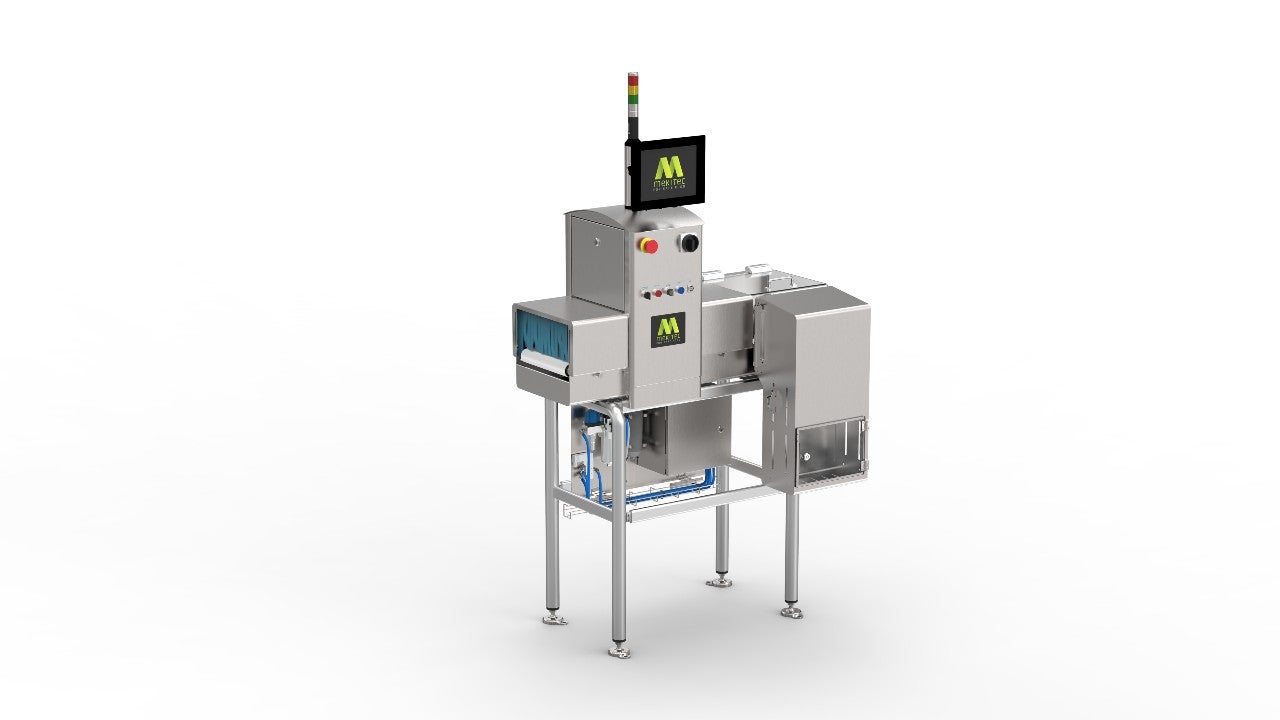
Food producers face many challenges, one of these being the need to meet increasingly high food safety standards expected of them by authorities, retailers and consumers. Risking the delivery of poor quality and potentially unsafe products to supermarkets not only puts the health of consumers in danger but also risks serious damage to your brand’s image and reputation.
Under this pressure, more and more food producers are turning towards X-ray inspection technology to achieve HACCP compliance. In addition to complying with safety regulations, they are also looking for a solution that can improve the overall quality of their product, resulting in more happy consumers and less reclamations. A further need for traceability at the critical control point is another point of growing importance. The question that many companies now have is how they can simplify matters by achieving all this from just one cost-effective X-ray system.
This is where many companies are discovering MEKI™ ONE, Mekitec’s compact all-in-one X-ray inspection system that provides all the necessary features for a high-performance critical control point. With MEKI ONE implemented into a primary packaging line, food producers can achieve next-level detection performance for foreign bodies, while also meeting global quality standards.
“MEKI ONE will monitor each single food package and make sure that there are no foreign bodies inside them,” says Juho Ojuva, director of global sales and customer care at Mekitec. “It will also automatically take the product that would be contaminated out of the production line and monitor these rejections are successfully performed. It’s a self-monitoring critical control point that both detects and rejects contaminated products on food production lines.
“There’s a limit to the value you can get out of, let’s say, metal detectors, but the value from X-ray is still developing further and further. Today, X-ray can include even more quality assurance functions to make sure that not just the foreign bodies are controlled and rejected but also that misshaped products, broken products or packaging failures can be detected and rejected at this critical control point. All of which is included in the initial cost without having to invest in any additional equipment.”
Item-level traceability with X-ray technology
With food inspection technology advancing from the limitations of metal detectors to high-tech X-ray inspection systems such as MEKI ONE, the needs of the industry are evolving too, with a new demand for traceability instating itself. Regulators, retailers and consumers now require demonstrable traceability in the form of concrete, visual proof that each item is safe and of the highest quality before it begins its journey to stores.
This item-level traceability can be achieved with MEKI ONE, which records images of each item that passes through the machine. This is something that Juho Ojuva argues is another major factor in the machine’s value.
“So far, critical control points have been poorly utilised to be a part of overall traceability and the data gathered from these CCPs has mostly been numerical statistics.” Ojuva says. “When you introduce MEKI ONE, it’s the first time that you can have individual X-ray images of the production available.
“That means that if there is a problem such as a customer reclamation of any product, you can go back to that specific production batch and get all of the images to show exactly what was sent out to the customers. If you have an X-ray picture of every single product that you produce, you can be sure that you also have a full audit trail for any customer reclamations or auditors to show what you manufactured.”
The compact, self-monitoring X-ray inspection package
Food production plants are often restricted for space, with a lack of room for implementing the new systems despite rules being tightened every year. For this reason, it’s important that you can get maximum value out of each installation, and this is where MEKI ONE comes in once again.
“It’s a compact unit that requires very little floor and production line space and we have everything included in that size,” Ojuva explains. “The point was to make sure that existing food production lines and existing metal detectors can be either replaced or complemented with this system easily without a major need for modification.”
Despite its small footprint, MEKI ONE comes with a range of important features, including sensors that monitor the operational functionalities, as well as the operator safety. Most notable is its integrated automatic rejection sensors monitoring that each rejection is performed successfully. If the rejection fails, the system will stop immediately. Further sensors monitor the fill level of the reject bin, stopping the system and notifying the operator if it needs to be emptied. These functionalities ensure that none of the non-confirming products remain in the production process after inspection.
Suitable for a wide range of foods from bread to nuts and chocolate bars, MEKI ONE is the ideal solution for producers looking for a compact high-quality machine to improve their production’s safety, quality and traceability, enabling them to achieve better product safety and quality, as well as obtain new food safety certifications to support their expansion to new global markets.
Please click here to download a free whitepaper: ‘How to Get The Best Value from a Critical Control Point in Food Production’.









